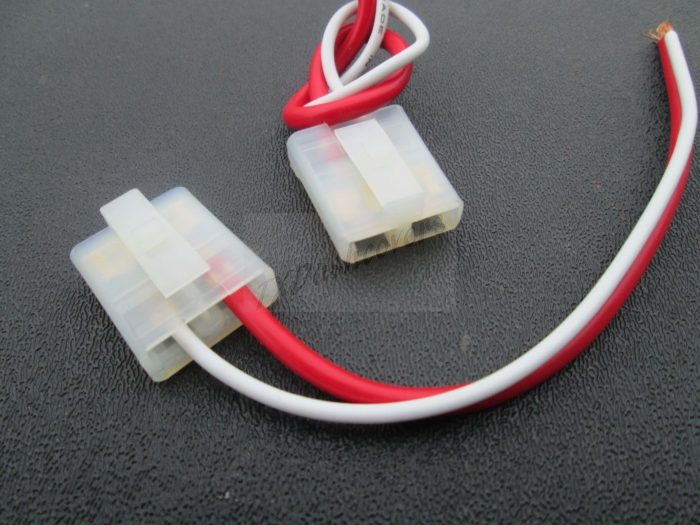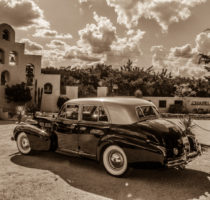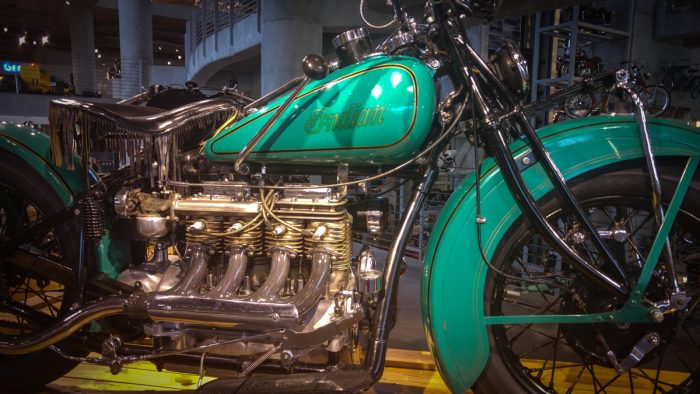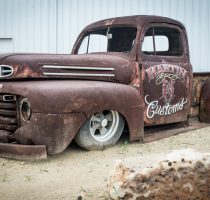
Dean Mericas has spent the past few months renewing his TR4 to its former glory. Click below for the full story:
Read More

Dean Mericas has spent the past few months renewing his TR4 to its former glory. Click below for the full story:
Read More
Author’s note: Although this article deals specifically with an older Saab alternator conversion, the identical concept applies to any vehicle of similar vintage.
Charging systems for automobiles have come a long way since the ’60’s. Older systems relied on generators, or first-generation alternators to produce current, then a connection was required through a separate voltage regulator to complete the system. All those connections and contact points (regulators) conspired to create constant issues with the system.
Then GM introduced the self-regulating alternator, requiring no separate external regulator, in the form of the now-ubiquitous Delco 10SI and later 12SI alternators.
So when recently the charging system in my venerable 1967 Saab Model 96 decided to take a powder, I was faced with the decision of spending a likely $150+ or so to rebuild my stock alternator (with a distinct likelihood of finding issues with the regulator as well), or just converting over to an inexpensive Delco 10SI alternator, eliminating the external regulator altogether. Given that I had a couple of serviceable Delco-style alternators laying around the shop, and my waning interest in maintaining strict originality with my car, I opted for the “function before form” choice of the Delco “upgrade”.
As a bit of a primer, there are two styles of Delco self-regulating alternators available: The so-called 1-wire (just hook up the alternator direct to the battery and go), and the 3-wire configuration. The 1-wire can be tempting, but I have always opted for the 3-wire setup, as it allows provision for an alternator charge warning light circuit without further alteration.
The 3-wire unit consists of a central single terminal post which is connected directly (or indirectly) to the battery. The remaining 2 wires are in the form of a 2-pin connector, which needs to be sourced for use with these alternators. Most any local parts store will carry these generic connectors. I bought mine at an O-Reilly’s for about $3:

If you need to purchase an alternator new, you will find them everywhere for about $75 or less, usually with free shipping. Of course, if buying from your local parts emporium, the genius behind the counter will want to know which car year and model, so you will have to exert a lot of pressure to get them to just open a few boxes until you get what you need.
The good news is all Delco 10si and 12si style alternators seem to have exactly the same mounting dimensions, so fitment shouldn’t be an issue. When purchasing, pay attention to the alternator “clocking”.. i.e., what position on the outer case will the 2-pin connector plug in. Although for the Saab, any one of the 4 clocking positions (12:00, 3:00, 6:00 or 9:00) will be workable, the best choice of a 9:00 clocking will position that plug right on the top of the alternator for easiest access:

The first step in working with any alternator installation is, of course, disconnecting the negative terminal of the battery for safety sake.
For the Saab-specific installation, there is a 3-wire plug-in connector at the OEM alternator which goes right to the 3-pin connector on the fender-wall-mounted regulator. I just unplugged that cable at both ends and tossed it in the spare parts bin (you know, those parts you will NEVER use again!)
Next, I removed the larger gauge (estimated 10 ga.) wire from the alternator which connects right to the larger post on the starter. There is another larger gauge grey wire attached to a second terminal on the alternator. This is the main feed to the fuse block unswitched power buss. The Saab manual’s wiring diagram shows this cable being connected directly to the large terminal on the starter (along with the previously mentioned wire to the alternator), so I followed that guidance, and connected both of those wires to the starter terminal.
A final connection on the Saab alternator was a black ground wire, attached to one of the case through-bolts. The Delco alternators typically don’t have a provision for a ground wire, under the assumption that the alternator will be properly grounded through its mountings. But since the lower block mount is isolated via rubber (see below), a ground-specific wire to the alternator seems like a good idea.
My own Saab never had an operating alternator charge warning light (that’s why I had to discover my alternator’s failure when the car wouldn’t start one day!). I found a small gauge (estimate 16 ga.) wire that some previous owner had just cut and left dangling from the wire bundle under the regulator. Since that color corresponded to the factory wiring diagram for the charge light, I surmised that wire led directly to the dash light. More about this later.
After removing the old alternator from the car, I could now turn my attention to fitment of the new(ish) Delco replacement.
The first issue was discovering that the beautifully crafted aluminum alternator mount is attached to the engine block through a pair of vibration damping (presumably) rubber fittings:

The problem is, there is a metal sleeve in the center of each of those rubber grommets. Overtime, the rubber has shrunken so that the attaching bolts bottom out on those metal sleeves before the bracket itself gets firmly connected to the block, leaving a very wobbly situation. I resolve that by using an angle grinder to whack off about 3/16″ of the length of each sleeve before reinstalling:

However, before reinstalling the alternator mount back to the block, there is another issue that must be resolved: It turns out that the lower, wider mount on the Delco alternator is drilled to accommodate a 3/8″ diameter mount bolt, while the original Saab alternator (and associated holes in the mount bracket) is set up for a 5/16 bolt. Something had to give so that the lower mount would be tight and wiggle-free. I opted to just drill out the 2 mount holes in the aluminum original mount bracket to 3/8″, thus accommodating a 3/8″ bolt for a snug fit.

Additionally, I found that the new Delco lower mount tab was about 1/4″ narrower than the Saab, so I had to add spacer washers on each side when installing the alternator to the engine:

Now with the new alternator firmly installed in its new home, I was pleased to see that the pulley lined up perfectly without any modification to either the upper or lower mount:

It is time to attend to the wiring.
A generic wiring diagram for the Delco 10si is shown below:

Note that the rectangle junction depicted just underneath the DC-10 title represents the large terminal on the starter motor.
You can see the connections are pretty simple. For the Saab-specific installation, make the following connections:
That is all there is to it! These instructions are equally applicable to vehicles original equipped with a generator (you can even buy a 6 volt alternator if appropriate), and in any case, following the simple connections as described, while abandoning/removing wiring from the regulator, will give the desired results. For those with generator installations, there are plenty of generator-to-alternator adjustable mounting brackets to be had with a simple Google search.
To test your new alternator installation, with the engine running, just attach a voltmeter to the negative and positive terminals on the battery. A good alternator should output 13+ volts at idle rpm, and should jump to 14 – 14.5 volts with the engine revved up.
Read More

In 2008, My wife Dorothee and I spent several weeks in the U.K., primarily to attend the Goodwood Festival of Speed
While driving through Great Britain and Scotland, we spied an unusual little car on several occasions, one that we couldn’t identify. After some further research, we learned this car was a Nissan Figaro.. built only in 1991, and never imported to the US. In fact, the Figaro was built in very limited numbers (20,000 total) and intended primarily for the Japanese market. But over the years, well over 4,000 of these right hand cars found their way to England, thanks to a less restrictive import bureaucracy than we have in the US.
Durin...
Read More
For several years now a British Ariel Square Four motorcycle has remained stubbornly on my bucket list of interesting bikes to own. Nope, had never seen nor ridden one in real life, but I have just always loved the classic British lines and the unique ‘square’ cylinder configuration.
Many Americans are unfamiliar with the Ariel motorcycle brand, but the marque is well known in England, where the Ariel owner’s club is very much alive, active, and well. In its heyday in the ’50’s, the Ariel was considered one of the premier bike brands in England. In terms of rarity, there were fewer Ariel Square Four bikes built than the well-known Vincent Black Shadows which now routinely command 6 figure prices.
In fact, Ariel, which produced its first motorcycle in 1902, could very well be considered the Harley-Davidson or Indian of British bikes.
Although Ariel produced quite...
Read More
These days, we take dual circuit brake systems for granted (well, don’t forget ABS and all the other alphabet gizmos as well). So, the younger generation could be forgiven for not knowing that dual circuit systems weren’t always the norm.
In fact, the first patented dual-cylinder system (Wagner Electric) didn’t come along until 1960. Yet, with few notable exceptions, most of the automakers ignored the safety issues inherent with an all-or-nothing single circuit system (a brake fluid leak anywhere in the system results in a COMPLETE brake failure) until 1967, when the feds mandated dual-circuit brakes. Finally, all the manufacturers stepped up to the plate and introduced these “new safety brake” systems, duping the public into believing that this wonderful new feature was being provided out of the goodness of their hearts.
In 1983, an NHTSA report esti...
Read More
Ahh, Christmas! Like everyone, I have many fond memories of Christmas’ past. The nice chill in the air to break the summer’s heat; the opportunity to recommission the hot tub and restock the wood crib; sitting by a warm fireplace on a cozy winter’s night..
This is the time of the year my wife decrees that all the decorations from past years come down from the attic, and then devotes days and days into transforming our home into a winter wonderland.
But then there are the aspects of the Christmas season I could do without.. the blatant commercialism which begins earlier and earlier each year; the 10 Christmas songs played over and over on the radio, many performed by the most unlikely and unwanted candidates (Freddy Fender.. really?)
The most egregiou...
Read More
It has been a year now since I was introduced to “Sven” our 1967 Saab model 96.
“Keep Austin Weird” is the motto in these parts, and I feel I am making my contribution by driving this quirky vehicle, a car that has quickly become my hands-down personal driving favorite.
“Weird” is perhaps too kind a descriptive term for “Sven”.

Everything about this car stands out in stark ...
Read More
When spring comes to Texas, a motorcyclist just naturally begins thinking of hitting the open road. Texas weather conditions can range from icy winters to brutal summers.. Only a narrow window of riding opportunities are left in spring and fall.
To take advantage of that lovely spring weather, I texted my biking buddy, Nathan Gibson, in early April, with the suggestion that we take a long trip east. Nathan, in true trooper fashion, responded promptly and positively, and suggested that we ride to his home town: Humboldt, Tennessee (a couple of hours northeast of Memphis). That sounded good to me, so we set a date and made a commitment to each other.
Su...
Read MoreAnyone who appreciates the fine workmanship of mechanical excellence would enjoy the Barber Vintage Motorcycle Museum.. arguably one of the finest collections of vintage motorcycles in the world.

This museum is located in Leeds, Alabama, just outside Birmingham, and nestled beautifully amongst a pine tree forest. The museum owns some 1400 motorcycles (according to its own website), with around 700 bikes on display at any given time, The 5-floor glass and steel building is reminiscent of the BMW Roundel museum in Munich.
Read More
You would have to look hard to find the “Martin Brothers Customs” shop. It’s hidden just off Highway 290 near Henly, Texas (10 miles west of Dripping Springs).
But, you don’t have to look hard to find the new Velocity TV series featuring principal owner Joe Martin and his wife Amanda. The series just started, and airs each Wednesday night at 9:00.
In the series, mild-mannered Joe and exuberant Amanda, find cars in serious need of attention, and then bring them back to life, usually with custom touches far exceeding the vehicle’s original design (first time viewers would never guess that Amanda’s other career (and personna) is as a demure and professional banker at a local Dripping Springs bank).

Joe has a lifetime’s experience ...
Read More
Social Profiles